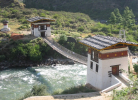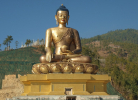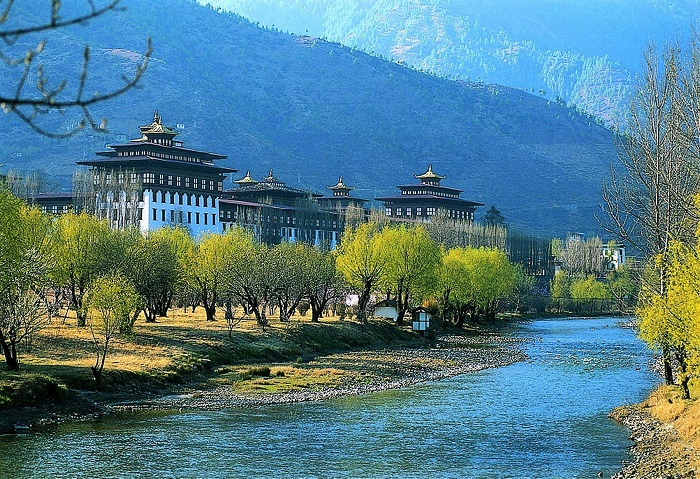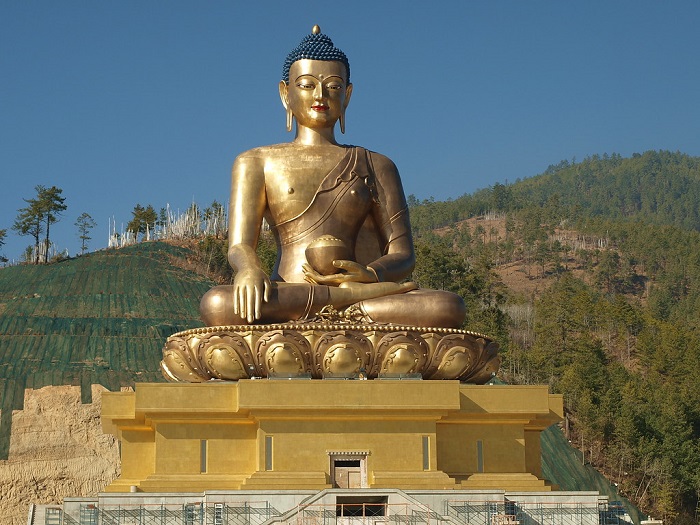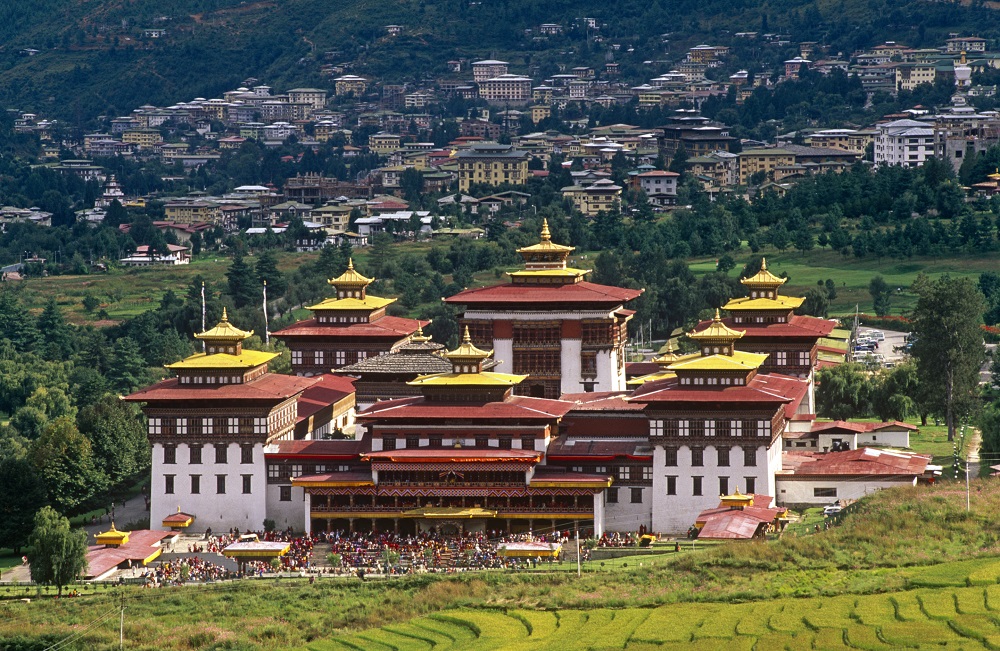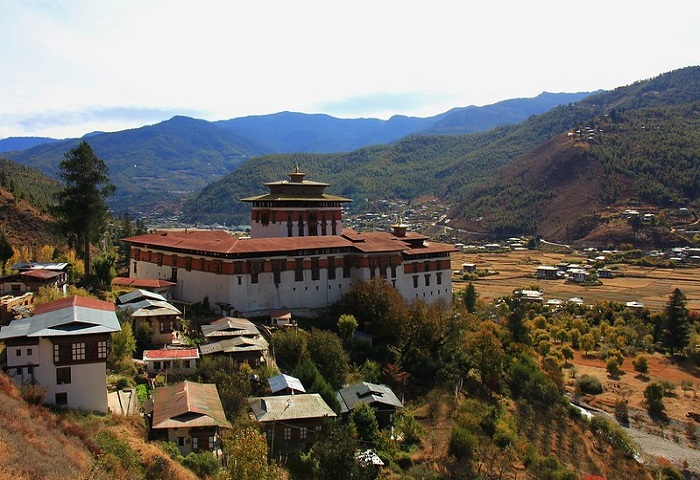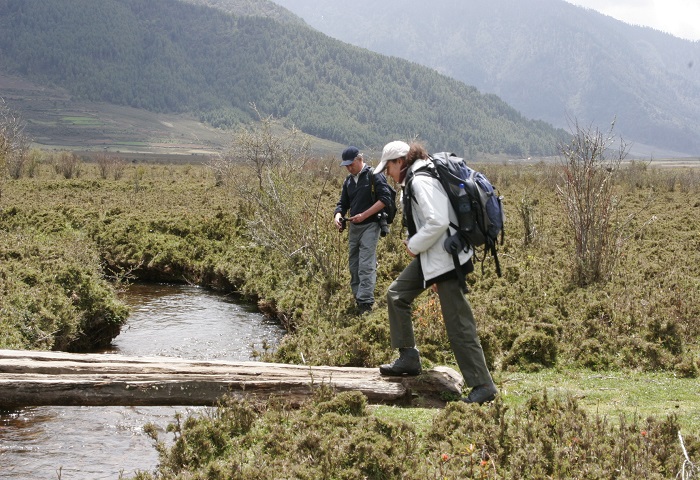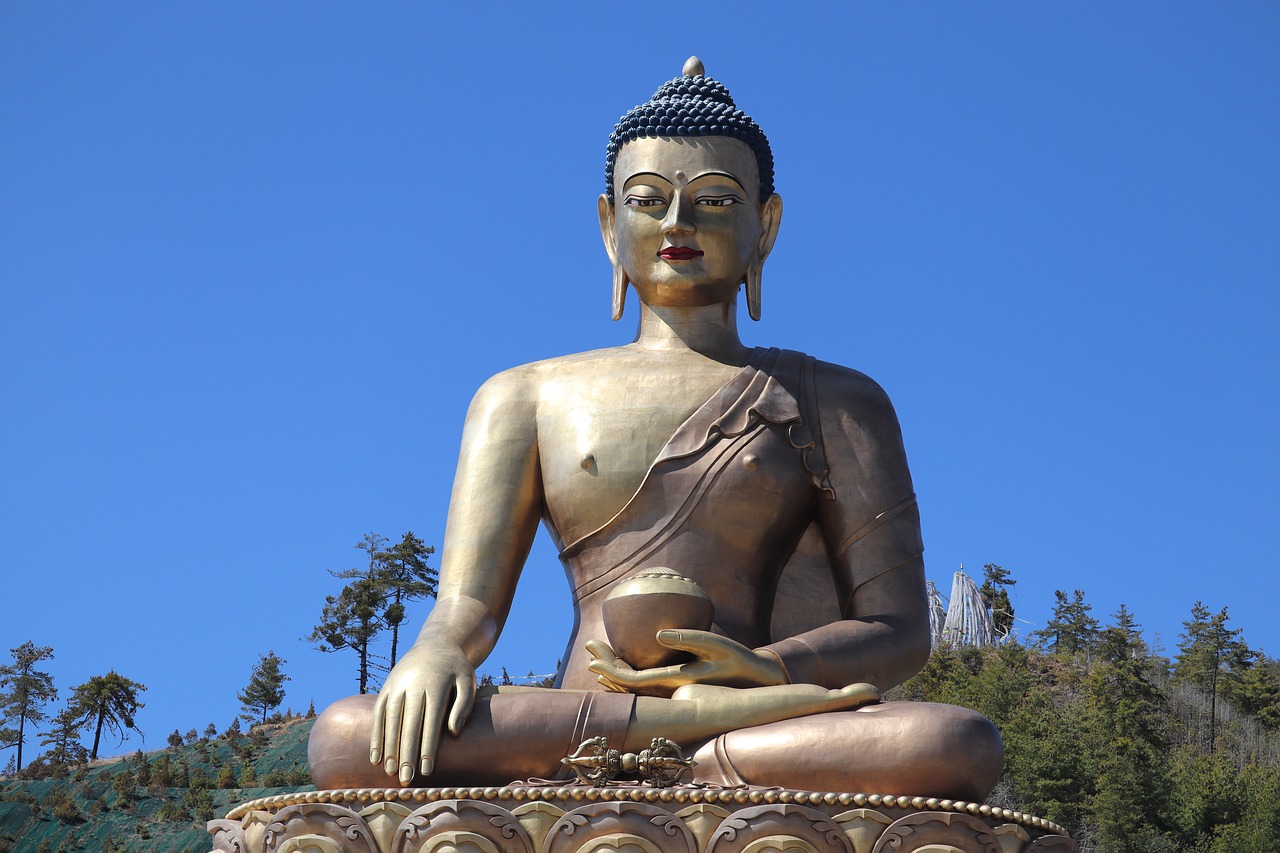Trongsa, Bhutan
It is one land which is separated from both east and west Bhutan by high mountains. Surrounded by mountains, it’s a common sight to see clouds hovering just a little over the mountains. One can easily distinguish Trongsa with its traditional white-washed shops and decorated pot plants lined up as one enters this city.
To reach Gangtey one needs to take road/cut 3kms before Pele La. Take the path towards Lowa La standing at a height of 3360 meters. The entire area is filled with low lying dwarf bamboo as you reach Gangte village. With potato fields and monks all around; it’s a place next to heaven!
Place to Visit in Trongsa
Ta Dzong
From a distance it looks nothing more than a cylindrical stone structure with five storeys built in 1952. But, if you look at it closely, it’s a perfect combination of the old traditions and the new. This classy living museum, has more than 200 items on display including bronze statue of Pema Lingpa, ritual costumes, prayer books, paintings and scrolls – all of them ages old. Ta Dzong with its living hermits is the only structure reconstructed to represent Wangchuck Dynasty.
Trongsa Dzong
This impregnable fortress of Bhutan is filled architecturally beautiful temples, corridors, live paintings representing Bhutanese tradition in every sense. Built on many levels, it was built in the year 1648.
Chendbji Chorten:
It takes 4 hours to reach Chendbji Chorten built on the pattern of Swayambhunath temple of Kathmandu. Built in 18th century, the main idea of building this chorten was to cover the remains of evil spirit which was incidentally subdued at this place. Surrounded by greenery, it’s a good place to be in.
Kuenga Rabten:
Kuenga Rabten was the winter Palace of 2nd King of Bhutan. Today, one can find the excellent wood work, colourful wall paintings and statues of Shakyamuni, Shabdrung and Guru Rimpoche making their presence felt in the surroundings of the Palace. There is also a library and the narrow path from the backyard leads to nunnery which can be reached by foot. It’s an excellent place playing host to Bhutanese monarch and their history.



